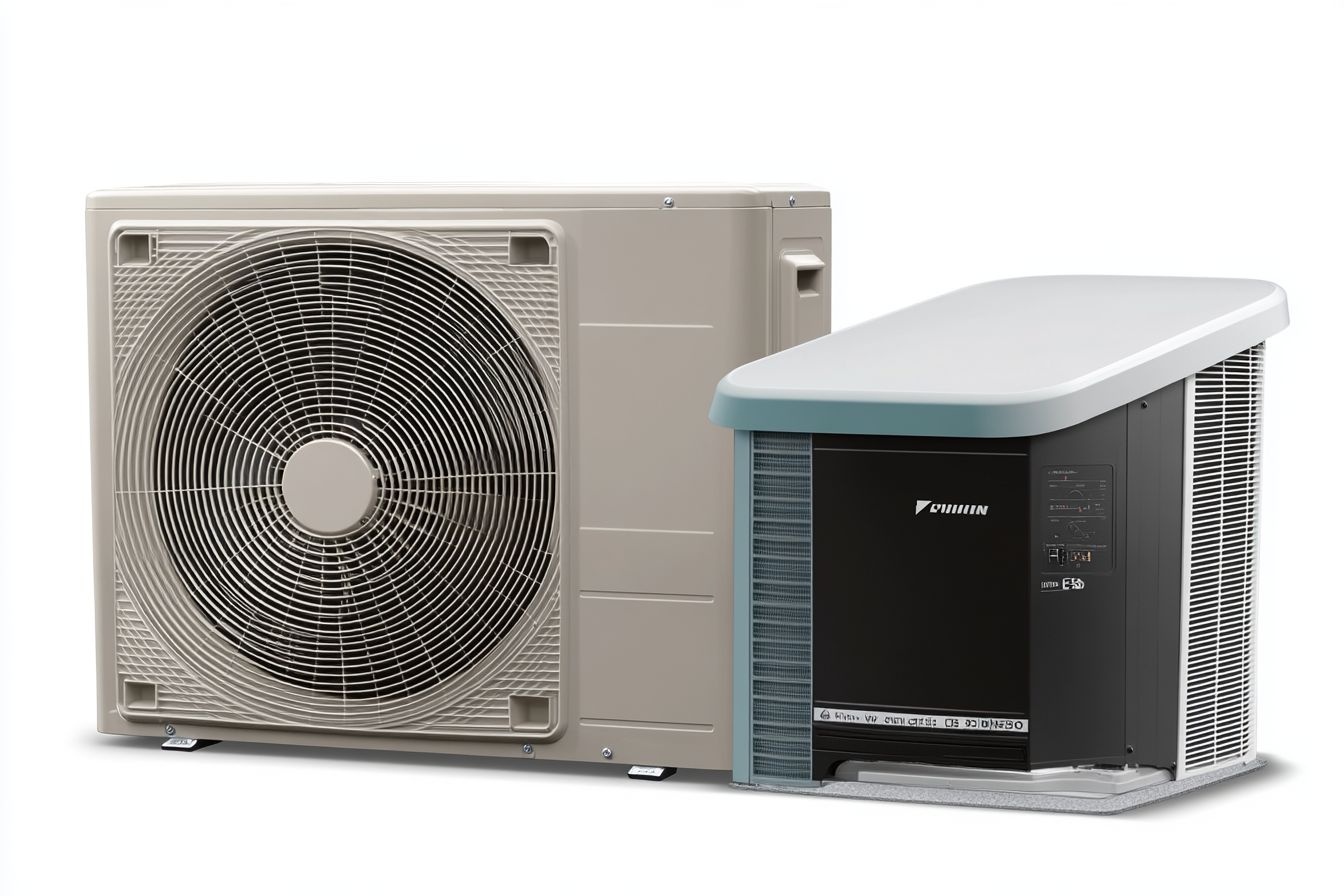Explore energy-efficient and flexible ductless air conditioning
Ductless air conditioning systems offer a modern solution for homeowners seeking energy efficiency without extensive installation requirements. These systems provide targeted cooling, allowing users to create customized temperature zones throughout their homes while potentially reducing energy consumption compared to traditional central air systems.

Ductless air conditioning systems represent a significant advancement in home cooling technology, combining efficiency with installation flexibility that traditional systems can’t match. Unlike conventional central air conditioning that requires extensive ductwork throughout a home, ductless systems consist of an outdoor compressor unit connected to one or more indoor air-handling units via a small conduit. This design eliminates the energy losses associated with ductwork, which can account for more than 30% of energy consumption in conventional systems. As energy costs continue to rise and environmental concerns grow, ductless systems are becoming increasingly popular among homeowners looking for cost-effective, environmentally friendly cooling solutions.
Key Benefits of Ductless AC Systems
Ductless air conditioners offer numerous advantages over traditional cooling systems. First and foremost is their superior energy efficiency. Most ductless models use variable-speed compressors that adjust their output based on the actual cooling needs rather than simply turning on and off, resulting in less energy waste. Many ductless systems also feature high SEER (Seasonal Energy Efficiency Ratio) ratings, often exceeding 20, compared to the 13-14 SEER typical of standard central air systems. Additionally, ductless units provide improved air quality through multi-stage filtration that can significantly reduce dust, bacteria, pollen, and other allergens. The absence of ducts also eliminates a common source of dust accumulation and potential mold growth. For homeowners in older properties or those adding new living spaces, ductless systems offer a practical solution without the disruption and expense of installing ductwork.
Flexible Installation Options for Any Space
One of the most compelling advantages of ductless air conditioning is its remarkable installation versatility. The indoor air handlers can be mounted on walls, suspended from ceilings, or installed in a recessed configuration, depending on the room’s layout and aesthetic preferences. The connecting conduit requires only a small three-inch hole through an exterior wall, making installation minimally invasive compared to traditional systems. This flexibility makes ductless AC an excellent option for historic homes where preserving architectural integrity is important, additions where extending existing ductwork would be impractical, or converted spaces like attics and garages. The distance between indoor and outdoor units can typically extend up to 50 feet, allowing for creative placement options that minimize visibility of the outdoor compressor while optimizing indoor comfort.
Zone Control for Customized Comfort
Perhaps the most appreciated feature of ductless systems is their ability to create individualized comfort zones throughout a home. Each indoor air handler operates independently, allowing occupants to set different temperatures in different rooms according to personal preference or usage patterns. This zoned approach eliminates the common problem of hot and cold spots found in homes with central systems. Bedrooms can be kept cooler at night while unused rooms remain at more moderate temperatures, optimizing both comfort and energy use. Most modern ductless systems come with programmable thermostats and remote controls, and many now offer smart home integration, allowing users to control temperatures via smartphone apps even when away from home. This level of customization is particularly valuable in multi-generational households where temperature preferences may vary widely.
Energy Efficiency and Cost Savings
Ductless air conditioning systems deliver impressive energy efficiency that translates to measurable cost savings. By eliminating ductwork, these systems avoid the energy losses common in central air conditioning, which can waste up to 30% of energy through leaks and poor insulation. The zone-based cooling approach also reduces energy consumption by allowing users to cool only occupied spaces rather than the entire home. Many ductless systems qualify for energy efficiency rebates and tax incentives, further reducing the overall cost of ownership. While the initial installation cost is higher than window units, the long-term energy savings combined with increased home comfort make ductless systems an economically sound investment for many homeowners.
Maintenance Requirements and System Longevity
Maintaining a ductless air conditioning system is relatively straightforward compared to conventional systems. Regular maintenance includes cleaning or replacing air filters every 1-2 months during heavy use periods, keeping the outdoor unit free of debris, and scheduling professional inspections annually. With proper care, most ductless systems have an expected lifespan of 15-20 years, often outlasting traditional central air systems. The modular nature of ductless systems also means that repairs can often be isolated to the affected component rather than requiring system-wide interventions. This targeted maintenance approach can reduce long-term ownership costs while extending the system’s useful life.
Cost Considerations and Provider Comparison
The initial investment for a ductless air conditioning system varies based on capacity, efficiency ratings, and the number of zones required. While the upfront cost exceeds that of window units or portable air conditioners, the long-term benefits often justify the investment.
| Provider | Single-Zone System Cost | Multi-Zone System Cost | Notable Features |
|---|---|---|---|
| Mitsubishi Electric | $3,000-$5,000 | $6,000-$12,000 | Hyper-Heating technology, 3D i-see Sensor |
| Daikin | $2,800-$4,500 | $5,500-$10,000 | Inverter technology, Comfort Control app |
| Fujitsu | $2,700-$4,200 | $5,000-$9,500 | High SEER ratings, advanced filtration |
| LG | $2,500-$4,000 | $4,800-$9,000 | Smart ThinQ technology, Gold Fin protection |
| Carrier | $3,200-$5,200 | $6,200-$12,500 | Silencer technology, Infinity control |
Prices, rates, or cost estimates mentioned in this article are based on the latest available information but may change over time. Independent research is advised before making financial decisions.
Installation costs typically add $1,000-$2,000 per zone, depending on complexity and local labor rates. While the initial investment is higher than traditional window units, many homeowners recover these costs through energy savings within 5-10 years. Additionally, various utility companies and government programs offer rebates for energy-efficient systems that can offset initial costs by 10-30%.
Limitations and Considerations Before Installation
Despite their many advantages, ductless systems aren’t ideal for every situation. In extremely cold climates, standard heat pump models may struggle to maintain efficiency, though newer cold-climate models have largely addressed this limitation. Aesthetic considerations are also important, as the indoor air handlers are visible in rooms (although newer, slimmer designs have improved their appearance). Proper sizing is crucial—an undersized system will struggle to cool effectively, while an oversized unit may cycle too frequently, reducing efficiency and dehumidification performance. Professional installation is essential, as improper installation can significantly reduce system efficiency and longevity. Homeowners should also check local building codes and homeowner association rules, as some may have restrictions on outdoor unit placement or require permits for installation.
Ductless air conditioning represents an efficient, flexible solution for modern home cooling needs. By eliminating energy-wasting ductwork, providing zone-specific temperature control, and offering installation flexibility, these systems deliver both comfort and potential energy savings. While the initial investment exceeds that of simpler cooling options, the long-term benefits make ductless AC an increasingly popular choice for energy-conscious homeowners.




